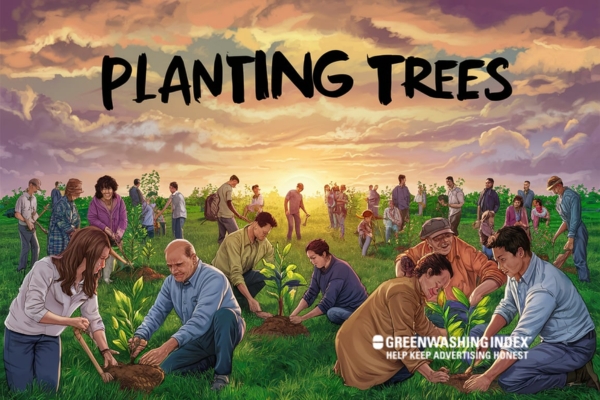

A sunny morning where the air feels fresher, and the world seems a bit greener. This refreshing scene unfolds every year when we Celebrate Arbor Day, a special occasion dedicated to honoring and nurturing our planet’s leafy sentinels. Trees, with their majestic presence, offer countless benefits, from purifying the air to providing homes for wildlife.
But how did this day come to be, and why does it hold such importance? Join me as we delve into the roots of Arbor Day, exploring its history, significance, and the many ways we can actively participate in this vibrant celebration.
Arbor Day is a special occasion that brings people together to appreciate the critical role trees play in our lives. It’s an opportunity to plant new trees and nurture our environment. Celebrating Arbor Day encourages communities to unite in their efforts to create a greener and healthier planet for future generations.
The roots of Arbor Day trace back to 1872 when J. Sterling Morton, a journalist in Nebraska, envisioned a day dedicated to planting trees. His idea took shape, and the first official Arbor Day was held on April 10, 1872, marking the planting of millions of trees across the United States.

Over time, Arbor Day has grown into a worldwide event, celebrated on different dates to align with local climates and planting seasons. This evolution signifies an increasing global awareness of environmental conservation and the enduring importance of trees in sustaining our ecosystems.
Also Read: Sustainable Holiday Tips: 27+ Brilliant Eco-Friendly Tricks
Arbor Day offers a wonderful chance to get involved with nature and learn about the importance of trees. Whether you’re planting trees, educating others, or hosting events, there are plenty of ways to make a positive impact on your community.
Let’s explore some exciting activities that you can engage in to Celebrate Arbor Day and make it a memorable experience for everyone.
Planting trees is a rewarding activity that contributes to environmental health, enhances landscapes, and supports wildlife. Proper planting techniques ensure that trees establish well and thrive in their new environment. Here are essential steps and considerations for successful tree planting:

Following these guidelines will help ensure your tree grows strong and healthy, providing benefits for years to come.
Educational activities play a crucial role in a child’s development by fostering creativity, critical thinking, and social skills. Engaging in hands-on experiences not only makes learning enjoyable but also reinforces concepts across various subjects. Here are some effective educational activities that can be easily implemented:

These activities not only support academic growth but also contribute to personal development by instilling confidence and a sense of accomplishment.
Hosting events requires meticulous planning and execution to ensure a successful experience for all attendees. Whether organizing a corporate meeting, a wedding, or a community gathering, several key elements must be considered. Here are essential tips for hosting effective events:

By following these guidelines, event hosts can create memorable experiences that meet their objectives and delight participants.
Also Read: Sustainable 4th of July Celebration Tips for a Nice Party
Participating in local tree planting and conservation initiatives is a great way to contribute positively to your community. Start by connecting with local groups dedicated to preserving green spaces. These organizations often host events like tree planting drives and educational workshops.
By joining, you’ll gain knowledge and meet others who care about the environment. You’ll also have the chance to volunteer in activities that directly improve local ecosystems. This not only benefits nature but also fosters a sense of community and responsibility towards environmental sustainability.
Engagement at the local level can make a significant difference.
Planting trees can be a rewarding endeavor, offering both environmental benefits and personal satisfaction. To ensure your trees grow healthy and strong, start by choosing native species that are acclimated to your area’s climate and soil. This not only boosts their survival chances but also supports local ecosystems.
When preparing the planting site, clear away any debris and loosen the soil to help the roots expand easily. Dig a hole that is twice as wide as the tree’s root ball, but no deeper than its height. This ensures the roots aren’t planted too deep, which can hinder growth. Once planted, water the tree thoroughly to eliminate any air pockets and to help the roots settle.
Applying mulch around the base can retain moisture, suppress weeds, and protect the roots from extreme temperatures. However, avoid piling mulch against the trunk as this can lead to rot. Regularly check the tree for signs of pests or disease and provide additional care like pruning to encourage healthy growth.
By following these steps, you’ll be well on your way to nurturing robust trees that will thrive and contribute positively to the environment around you.
Arbor Day stands as a vital reminder of the importance of trees in our lives and communities. It encourages us to engage actively in environmental stewardship by planting and caring for trees. By celebrating Arbor Day, we can enhance our surroundings, foster community spirit, and contribute to a healthier planet.
These actions, though simple, have profound impacts on our environment and well-being. As we embrace this annual event, let us continue to nurture our connection with nature and inspire future generations to do the same.
If you found this insightful, explore more of our blogs for engaging content and practical tips on environmental conservation!
